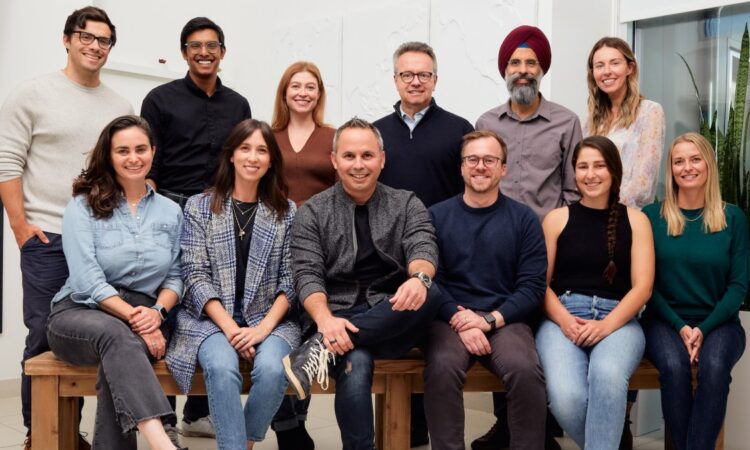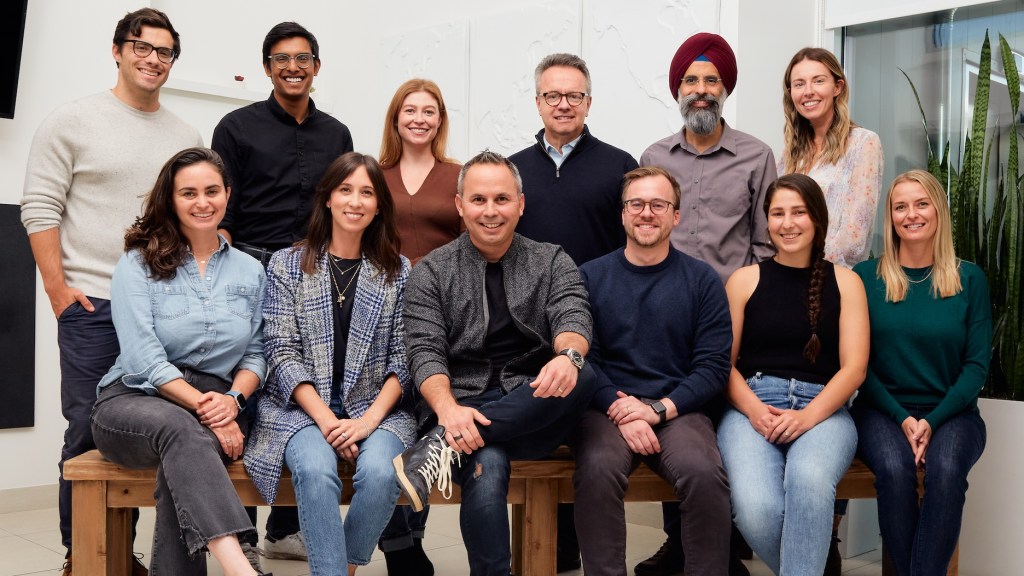Innovation Endeavors closes $630M for Fund V to invest at intersection of science, tech


Image Credits: Innovation Endeavors
Innovation Endeavors joins other venture capital firms like Thomvest Ventures and Myriad Venture Partners in announcing a new fund. This is the firm’s fifth fund and a whopping $630 million in capital commitments — the firm’s largest fund to date.
Eric Schmidt, the former Google CEO, started the firm in 2010 with Dror Berman, Scott Brady and Rick Scanlon to invest at the intersection of science and technology. Think climate, intelligent software, engineering health and supply chain.
The firm intends to deploy capital into between 30 and 35 companies with this new fund, though it has not made an investment yet, Berman told TechCrunch.
Over the past 14 years, the firm has invested in 115 companies, 34 of which exited, including SoFi, Uber, Astra, Slice and Zymergen. Some recent lead investments include Machina Labs, a mechanical and industrial engineering and manufacturing firm, and BioLoomics, a biotechnology company that develops antibodies for cancer therapies.
TechCrunch spoke with Berman and Brady about the new fund, Innovation Endeavors’ evolution and how a diverse pool of talent is going to be a requirement for next-generation startups.
The following was edited for length and clarity.
TC: How has Innovation Endeavors grown in the past two decades?
DB: After forming the firm, Eric Schmidt and I spent a lot of time thinking about the future, what’s to come and how we could actually leverage technology to solve really hard problems that we forecast, and that already existed, will actually get worse over the next few decades.
We recognized that there were some technologies that were emerging and converging to essentially allow us to solve those problems — industries that haven’t benefited from technology — anchored in the physical world or the biological world. Think manufacturing, supply chain space, all the way to climate change, drug discovery and development, healthcare and so on. But also thinking about horizontal layers of all the new technologies that would emerge during this period of time.
We spent a lot of time building this firm, but also constantly thinking about how we become a partner of choice for those kinds of entrepreneurs. It would be a different type of startup and a different type of playbook. Over the last 14 years, we’ve partnered with entrepreneurs that have been defining a lot of those industries that I mentioned and building huge companies in those spaces. That allowed us to keep growing and launch several funds during that period of time.
Now you’re launching Fund V, which is your largest. Why now?
DB: It’s probably the most interesting and exciting time to build new companies. If you think about the next decade, we’ve been seeing a rapid pace of technology. Obviously it’s been evolving over the last few decades, but more so in just the last few years.
The entire world is familiar with AI and what’s possible with generative AI since OpenAI launched publicly. Similar to what’s to come in quantum computing, robotics, sensing and so on. We believe that we’re just at the beginning of an incredible time where a lot of those technologies will continue to develop.
We decided to launch a slightly larger fund than we’ve done in the past to be able to support those companies throughout what I see as an increasing or growing valley of death that exists in these integral stages.
How active is Eric Schmidt these days?
DB: He’s been helping us across different things. We have many entrepreneurs who want to speak with him to share their work or get strategic help. Helping entrepreneurs is his superpower.
We run monthly sessions and bring in a few companies to spend 30 minutes to an hour with Eric. He’s doing amazing work and can dive deep very quickly to really understand what is going on, analyze it and then come back with a unique set of insights that actually helps those companies think about those challenges differently. It’s very different from what I hear in Silicon Valley boardrooms.
What are some of the technologies and industries that have caught your eye in the past couple of years?
SB: We look broadly across the physical economy, which is energy, climate, infrastructure and materials. These represent the majority of GDP. Each of those individually have tremendous opportunities. Being data-driven, we also think about the impact of automation and other technologies.
Another part of the fund focuses on the life sciences that’s thinking about the application of these technologies in things like new therapeutics or diagnostics. We look at what is possible today that wasn’t previously and how we can improve the quality of people’s lives.
A third looks horizontally about these core technologies and how they’re going to be applied across these industries and trying to build that core infrastructure — the enabling tools — that will allow the engineers and scientists within those industries to bring this disruption to bear.
What will be needed to bring many of these technologies to market?
SB: The technologies are quite broad and I’d say some of the interesting things we see is, generally if you did your PhD more than five years ago, you’re really not current in a lot of these technologies. An entire generation of scientists and engineers are having to learn a new set of capabilities and then a really ambitious set of new talent is coming into the market that can be the expert in these technologies. It’s an interesting confluence of both talent and technology and opportunity that has us excited.
How do you go about looking for investments?
SB: The approach that we’ve taken is probably slightly different than many other firms. As mentioned, the emergent nature of technology is very talent-driven, and a lot of that talent is coming out of industry or coming out of academia. A lot of our work is very thesis-oriented. We’re not just observing what comes to us; we’re actually trying to actively be out meeting the talent, many times, long before a company ever gets formed.
We started in some cases, two years ago, sitting in the research labs to understand the technology, who is working on this area, and learning when they are peeling off to do something interesting. It’s really a funnel of relationships that we’ve been cultivating for a very long time.
You said you haven’t invested from this new fund yet; however, what kind of pipeline do you have going?
DB: We’ve been fortunate to have enough funds to keep investing seamlessly, so we raised this fund before we even finished the previous one. It allows us to continue being very active now and investing. It gives us more time to build relationships with entrepreneurs and actually get to know them. When it’s the right point in time when they’re ready to launch the company or raise the next round, we are there to support them.
Have a juicy tip or lead about happenings in the venture world? Send tips to Christine Hall at chall.techcrunch@gmail.com. Anonymity requests will be respected.
Jan. 25: Updated the number of companies invested and exits.
